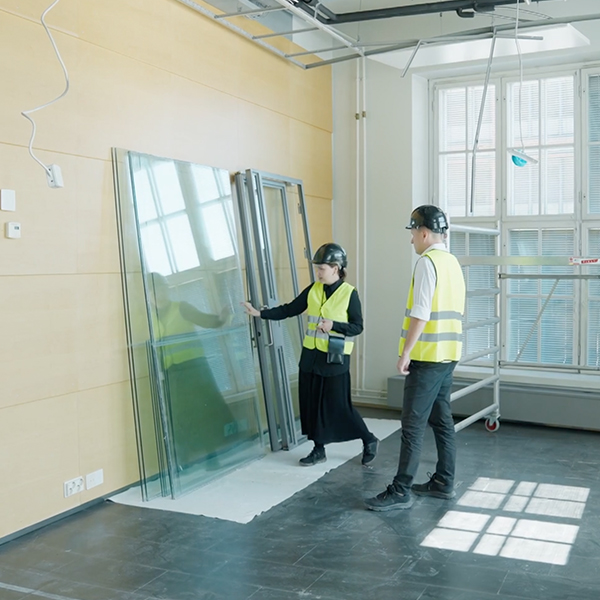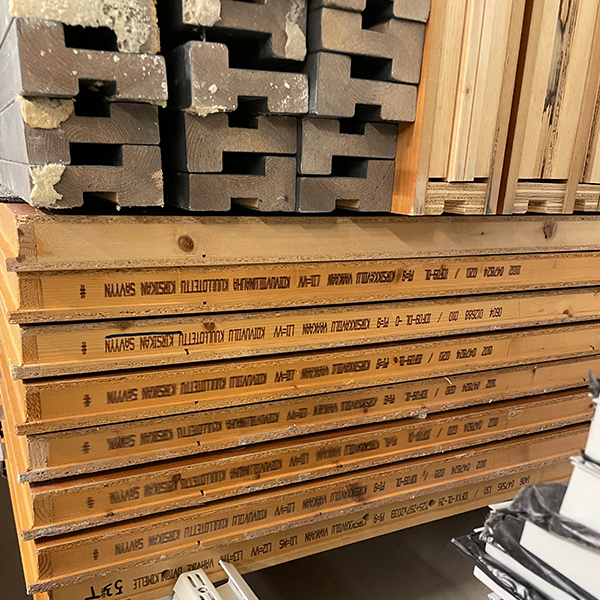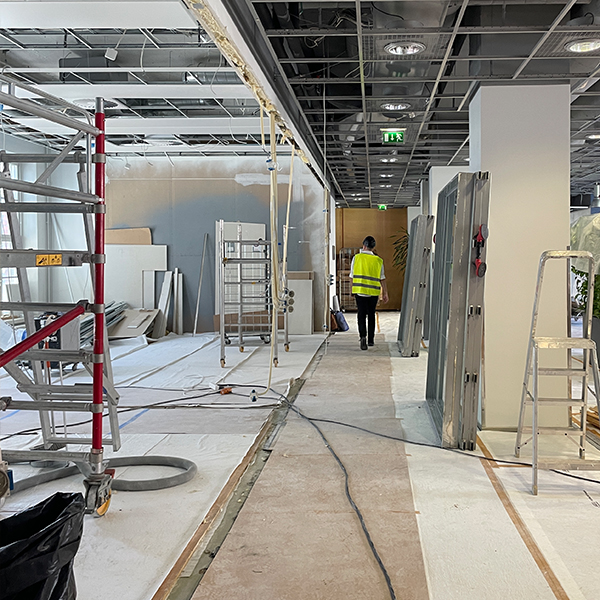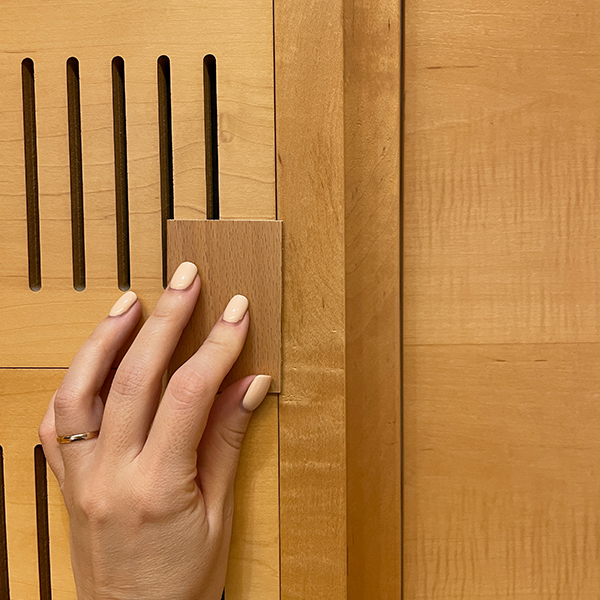


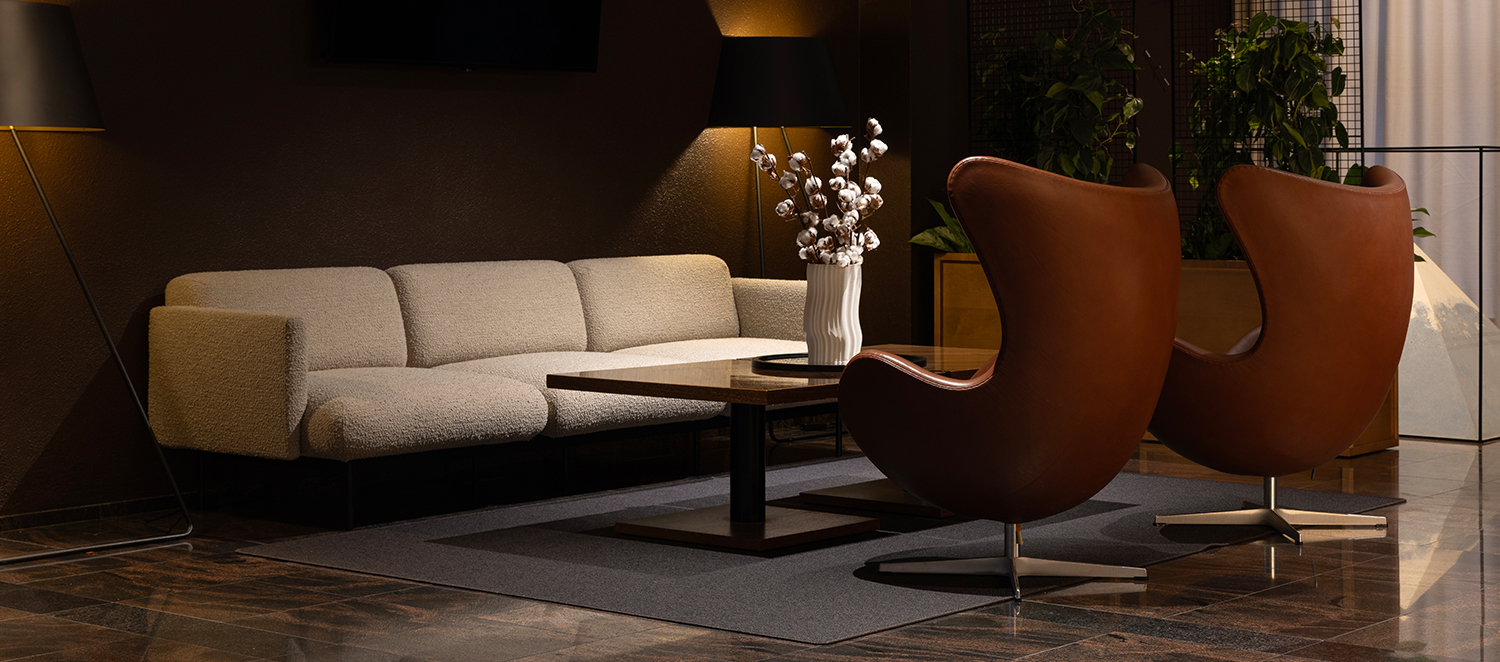
Timeless elegance with low carbon design
We designed a low-carbon transformation for the lobby, restaurant and conference rooms of the Lindström Talo office property owned by Castellum. The aim was to renew the look with sustainable solutions and design an interior with a timeless elegance that suits the ambience of the 120-year-old brick building. As the previous renovation was over 20 years ago, it was time to update the public spaces to be more functional and attractive. During the design process, the carbon footprint of the renovation was measured and the results of the emission calculations were used to help make more sustainable choices.
Castellum Oy
Kalasatama, Helsinki, Finland
~1018m²
9.9 kg CO₂e/m²
Old textile factory
Evident in glasswalls, lights, ceilings, furniture & details
For Green Building Council & City of Helsinki
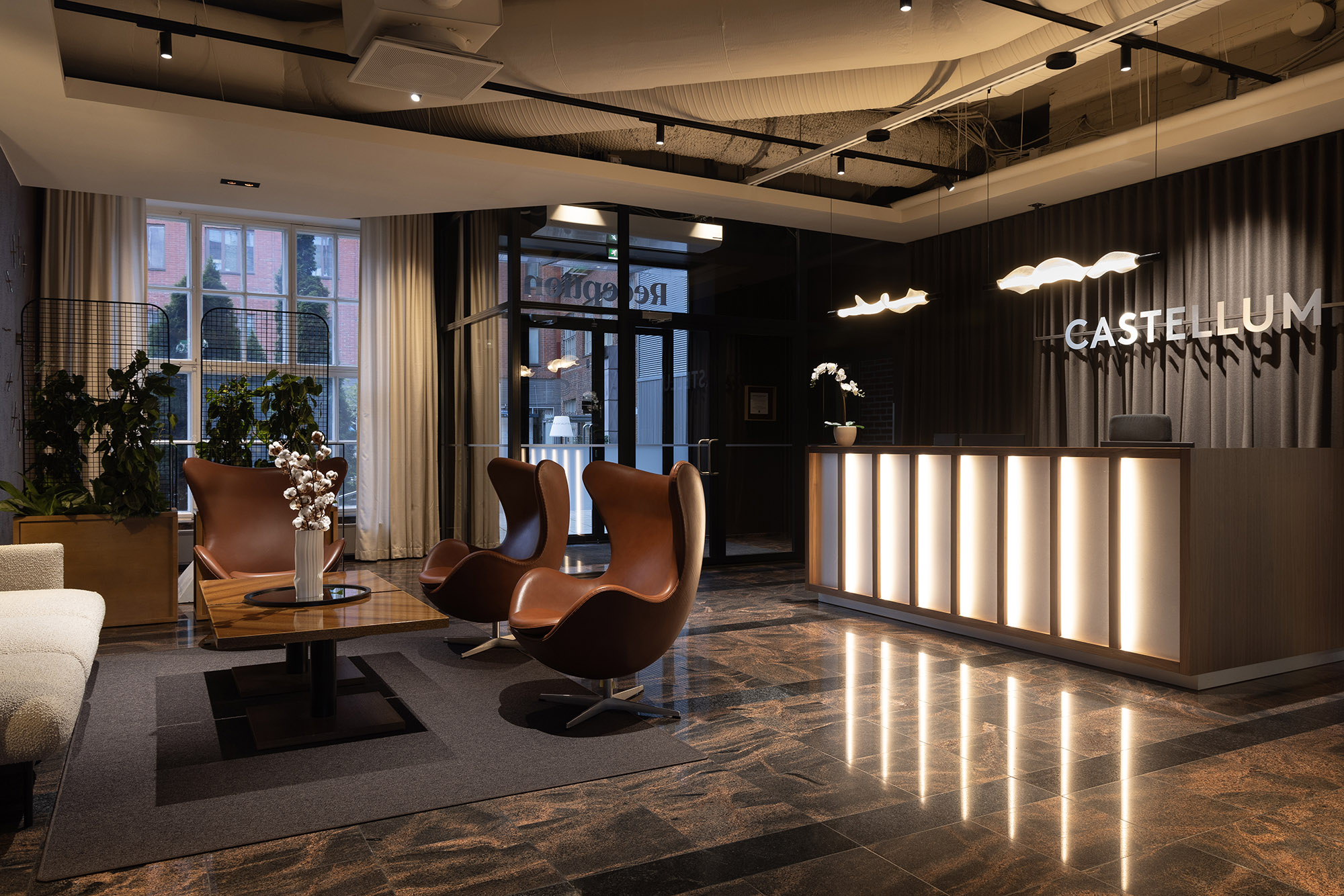
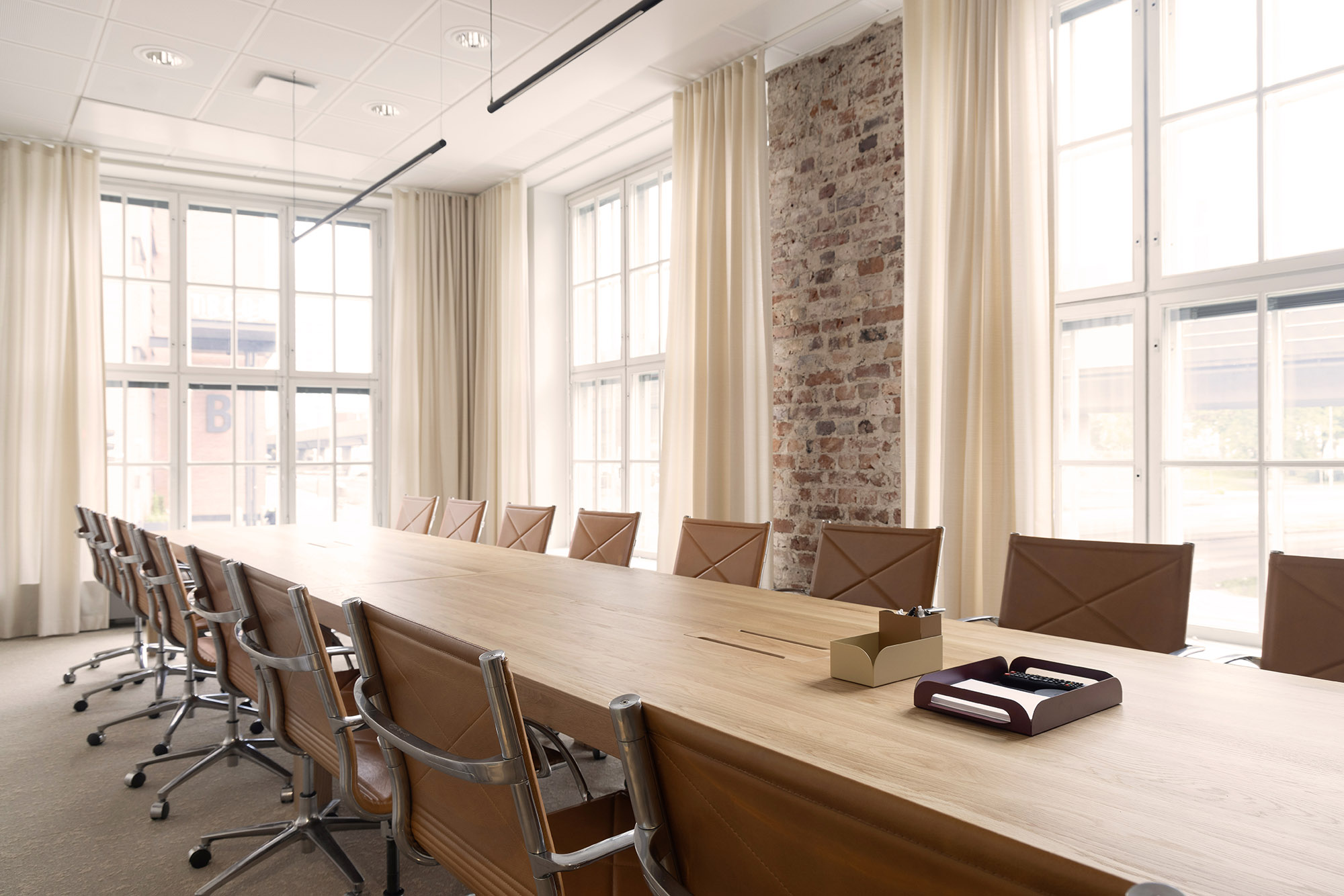
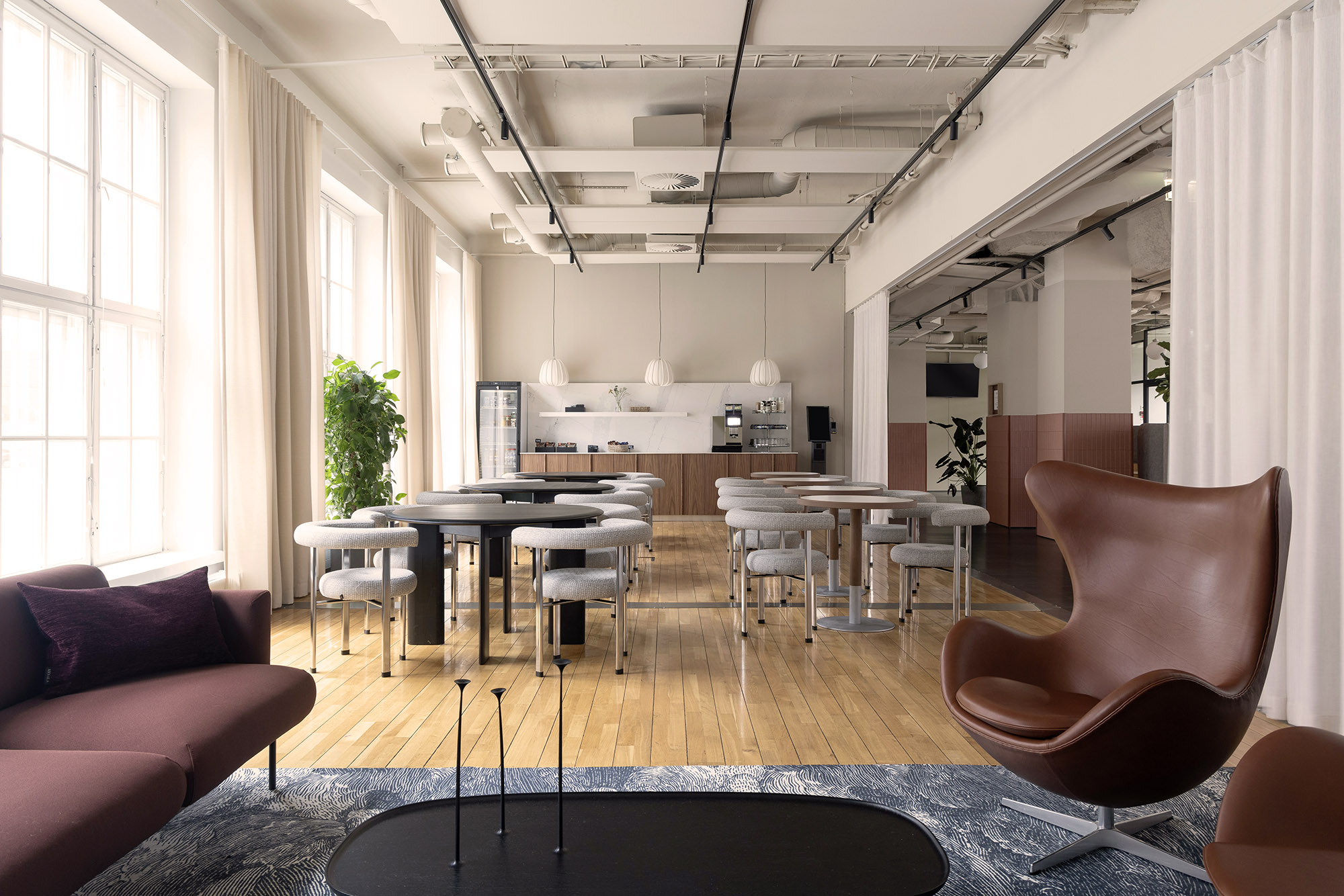
In the early stages of the design, many different floor plan options were made and the need to demolish the existing interior was questioned. Scenarios of different scopes were utilized in the design to achieve sustainable yet flexible and long-lasting solutions. Comprehensive material inventories were made on-site, and as a result many elements that would be demolished were recycled and re-utilized in the renovation. Various circular economy solutions were implemented in the premises, including glass walls, suspended ceilings, lighting, as well as new vestibules, furniture and signage. Circular economy solutions reduced the project's emissions by a total of approximately -14.5t kg CO₂e/m². In addition, 30% of the furniture is recycled.
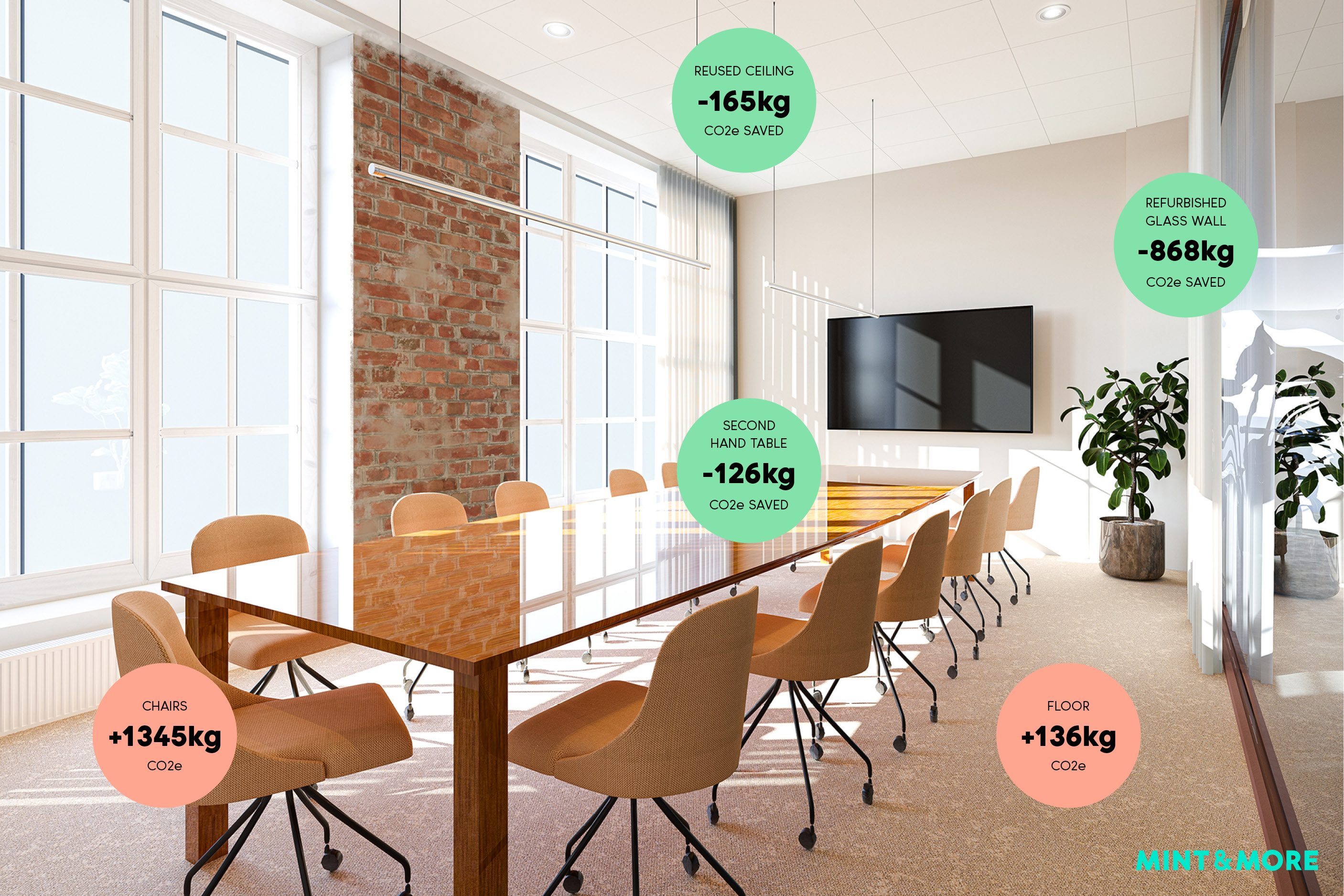

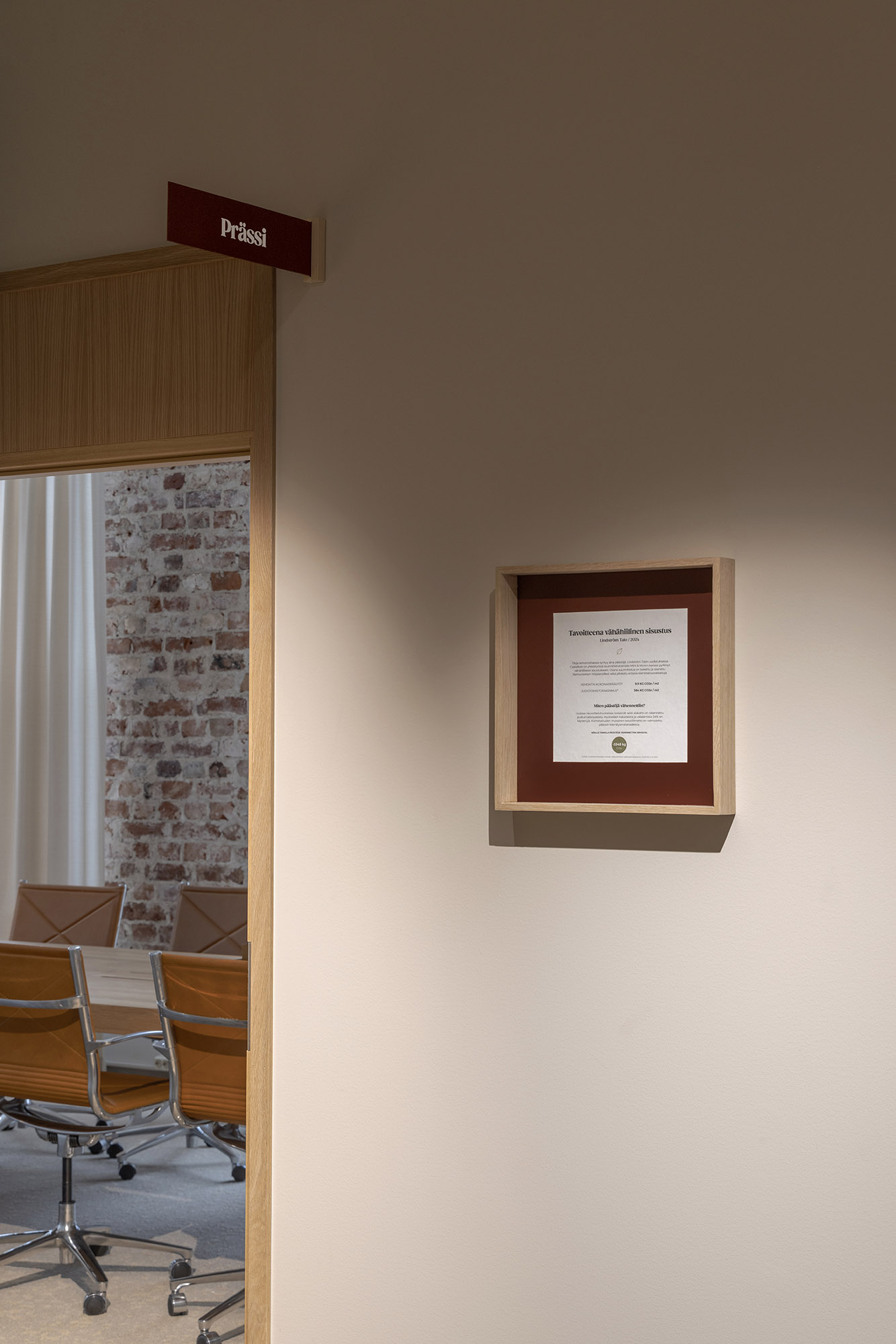

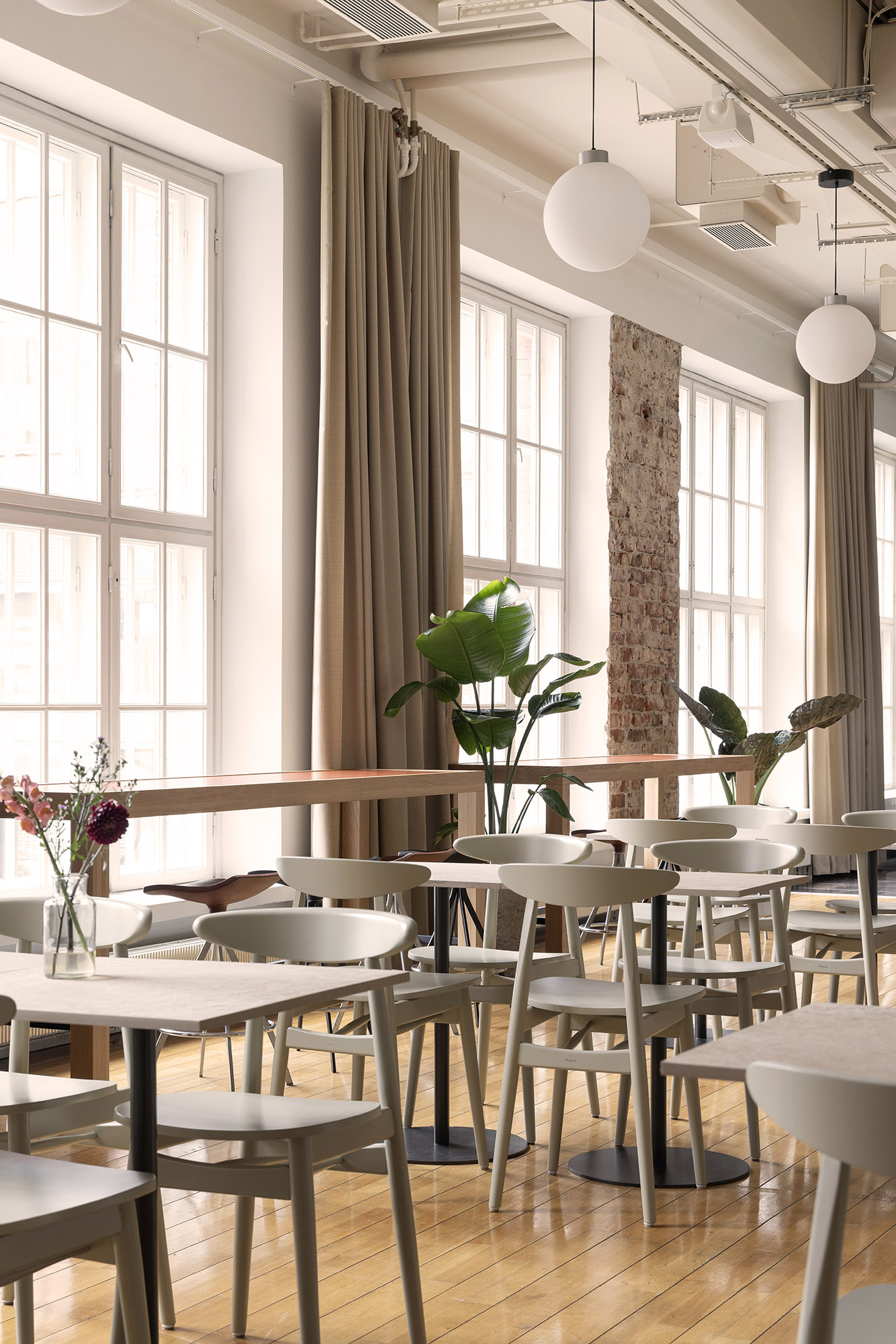
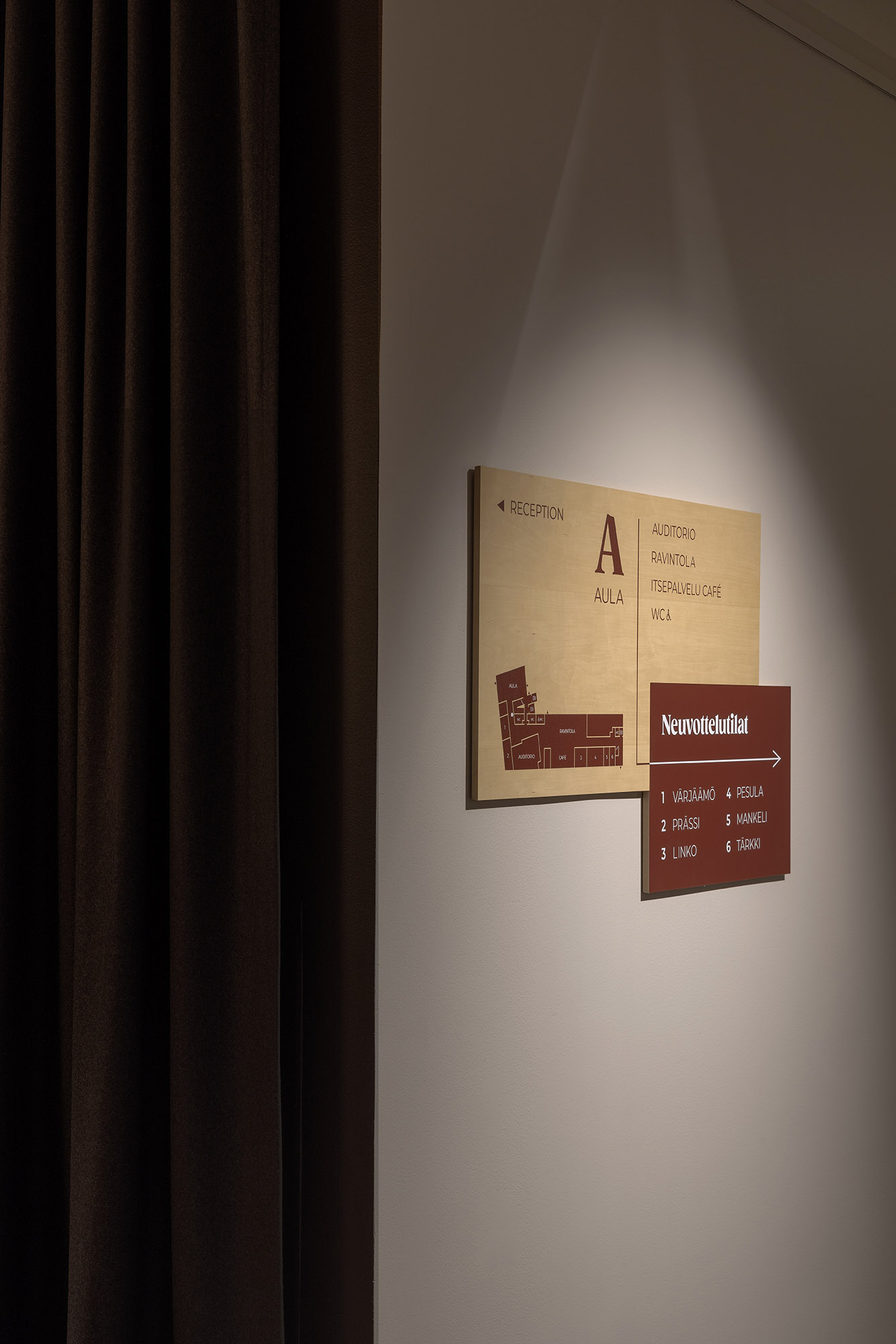
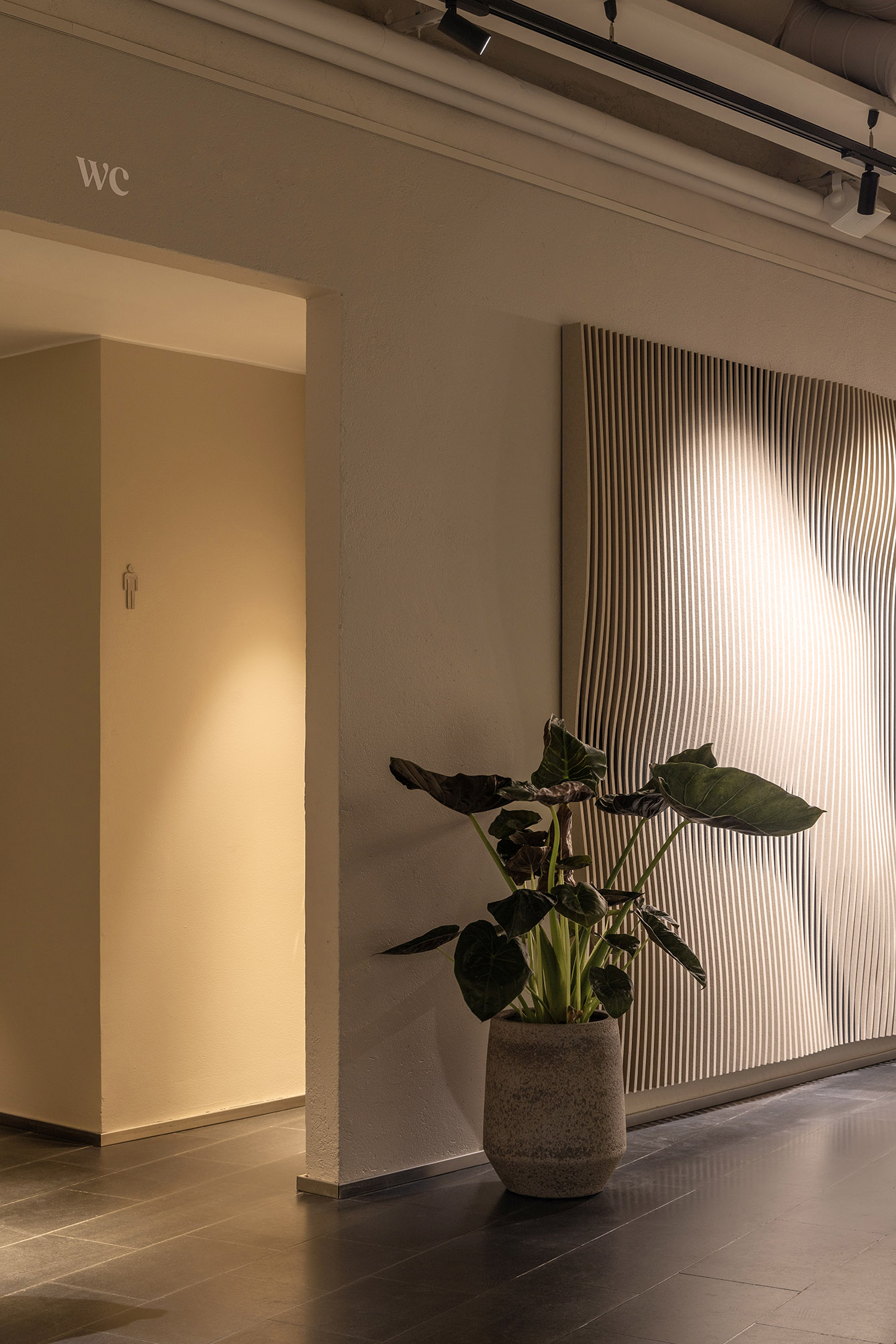
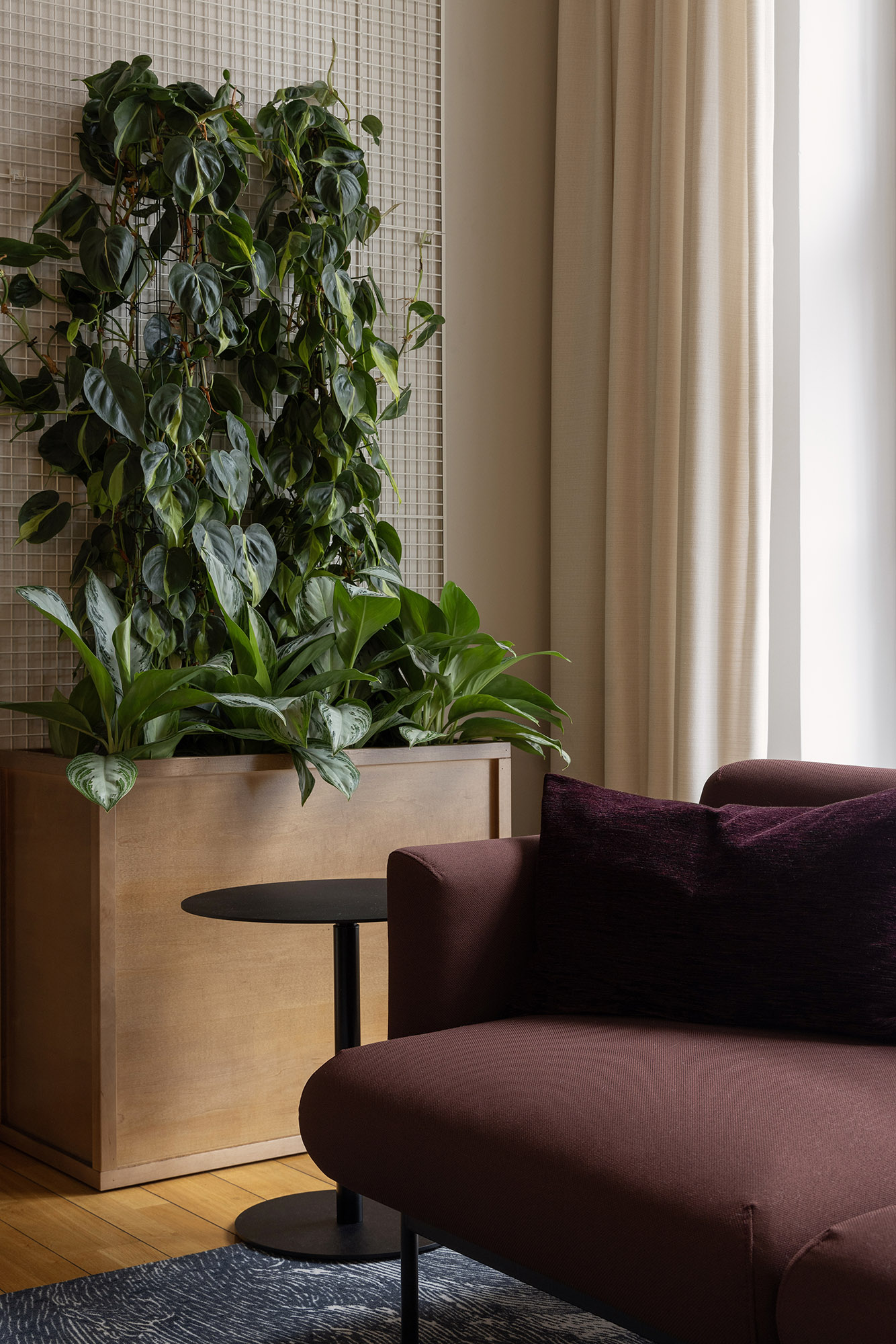
We calculated the carbon footprint (LCA) of the space changes both in the draft phase and in the contract calculation phase and used the results to support the design. The Lindström Talo project was presented as a pilot for the Finnish Green Building Council's (FIGBC) new guidelines for calculating the carbon footprint of interior renovations. The project was also a pilot for the City of Helsinki's circular economy cluster. The emissions from the renovation totaled 10.1t kg CO₂e (9.9kg CO₂e/m²). This corresponds approximately to the yearly emissions of an average Finn. Of all five FIGBC pilot projects, Lindström Talo's emissions were the lowest per m². In addition, the carbon footprint of all the furniture was assessed separately to obtain a more detailed picture of the total emissions, showing that an estimated extra -12.5t kg CO₂e was saved with second-hand furniture.
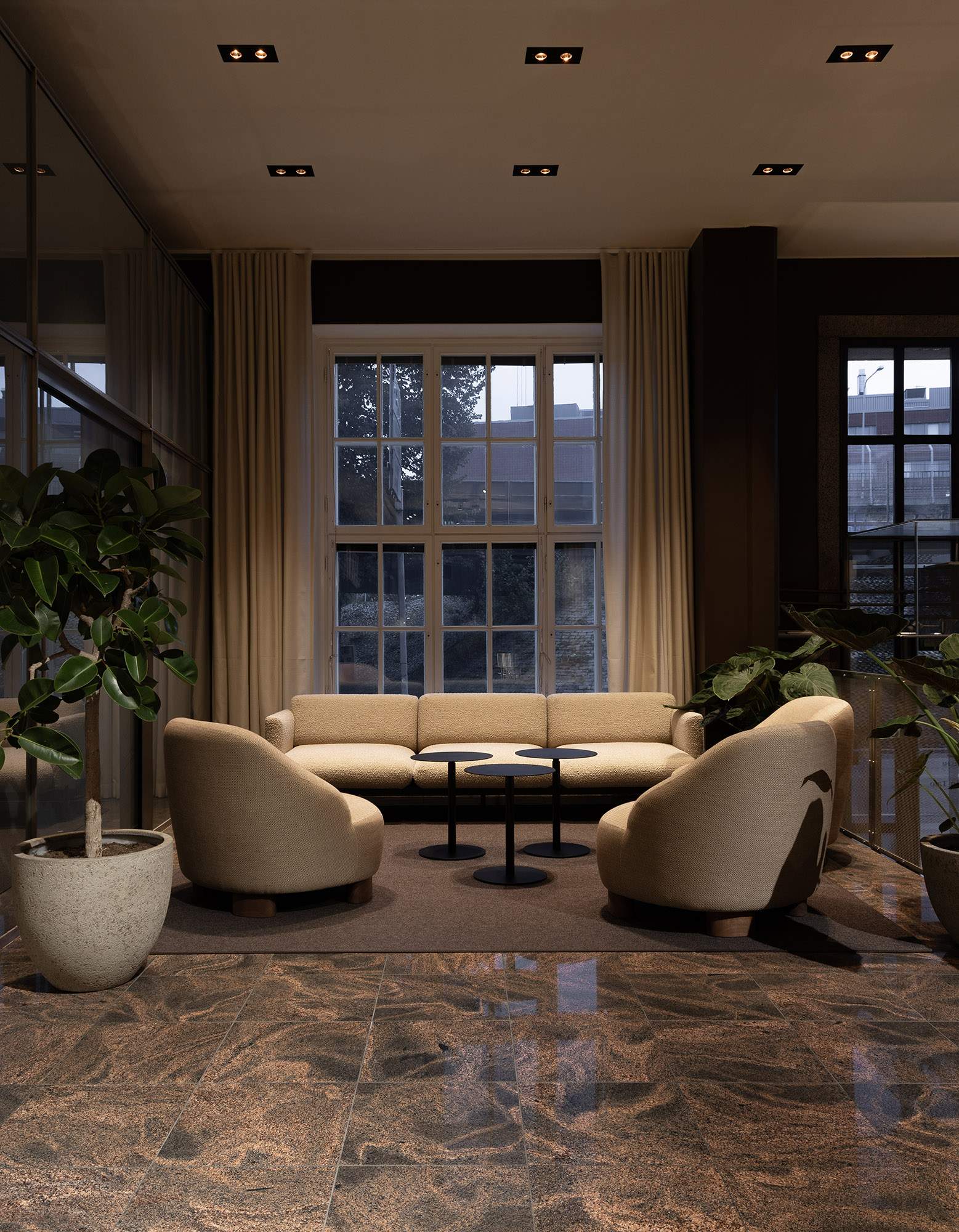

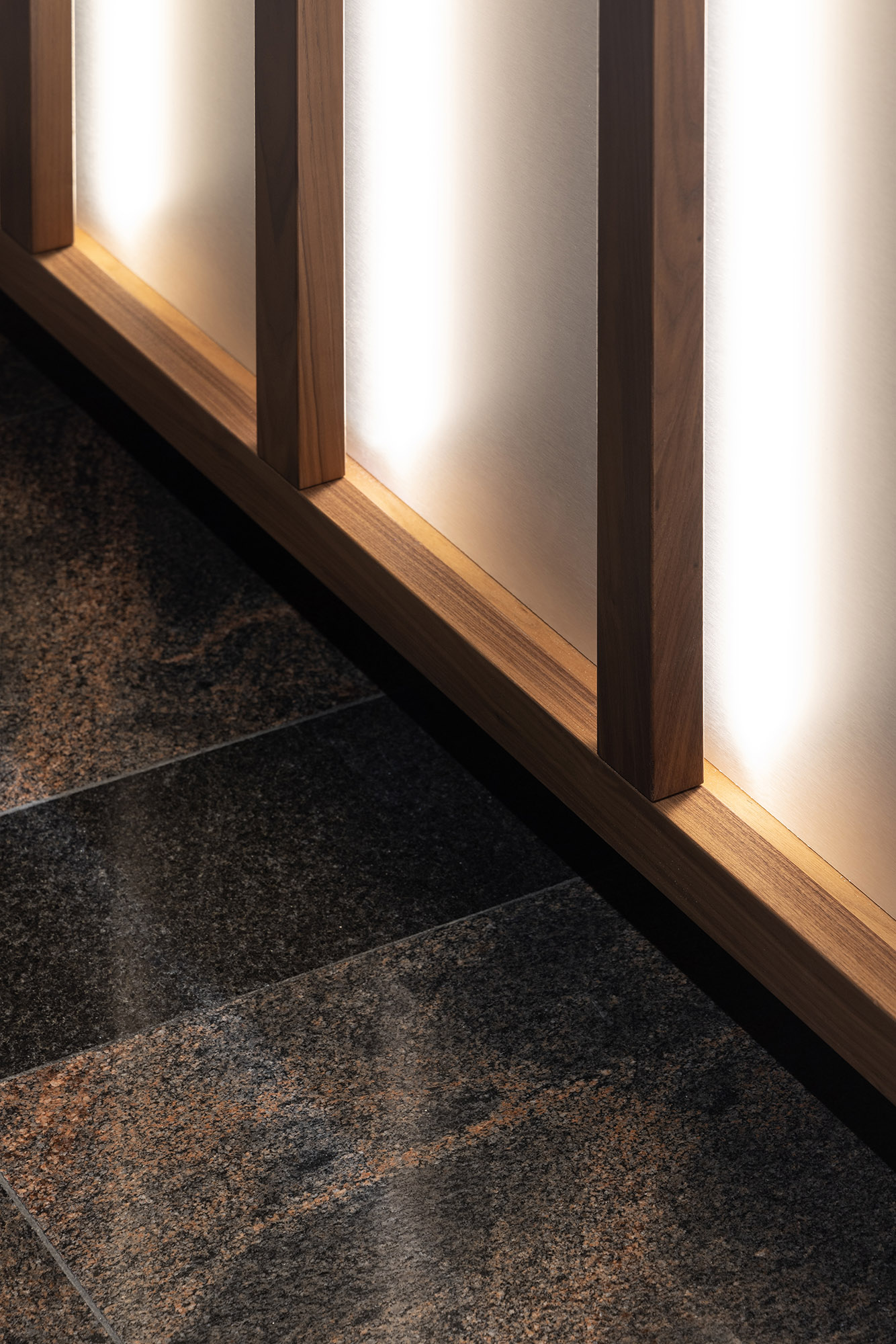

Photos by Esa Kapila
